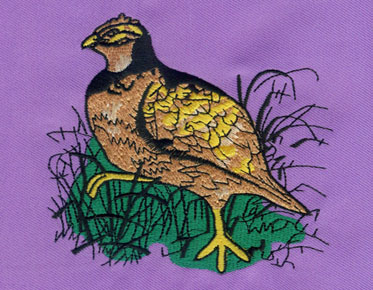How Embroidery Digitizing Shadows
In the world of textile design, embroidery
digitizing is a revolutionary technology that transforms complex designs into
machine-readable instructions. In essence, it's a bridge between traditional
craftsmanship and modern technology. One aspect of this process that can
significantly elevate the final design is the digitization of shadows. This
article will delve into the techniques and considerations of creating shadows
in embroidery digitizing.
Understanding Embroidery Digitizing
Embroidery digitizing is the process of converting existing artwork like a logo, symbol, or design into a digitized file that an embroidery machine can understand. This digitized file provides the machine with the necessary instructions about stitch type, stitch direction, color, and speed. When performed professionally, embroidery digitizing services can reproduce intricate designs with high fidelity on various fabric types.
The Significance of Shadows in Embroidery Digitizing
In any visual design, shadows play an
essential role in creating depth and enhancing the overall perception of the
design. They bring a three-dimensional feel to a flat image, making it more
realistic and appealing. In the context of embroidery digitizing, shadows
contribute to creating an illusion of depth in a stitched design, making it
more dynamic and lifelike.
Techniques for Digitizing Shadows
1. Density Variation
One of the simplest ways to create shadows in embroidery digitization is by
manipulating stitch density. The area intended to be shadowed can be stitched
with a higher density, making it appear darker than the rest of the design.
This technique requires careful calibration of the embroidery machine to ensure
the density changes are smooth and gradual, creating a convincing shadow
effect.
2. Color Gradients
Color gradients can also be used to create shadows in embroidery digitizing. This involves gradually transitioning from one color to another, usually from a lighter to a darker shade of the same color. However, creating smooth color gradients in digitization for embroidery can be a technical challenge, requiring expertise and high-quality digitizing software.
3. Layering
Layering is another effective method for creating shadows. This technique involves placing a layer of stitches over another to create a shadow effect. Layering can add depth and texture to the design, but it also requires skillful handling to avoid making the fabric too heavy or stiff.
Challenges in Digitizing Shadows
Despite the exciting prospects, digitizing shadows is not without
challenges. The primary concern is to maintain the fabric's integrity. High
stitch density and layering, if not done correctly, can compromise the fabric's
drape and feel. Moreover, the digitization process should be handled with care
to ensure smooth gradients and transitions for a realistic shadow effect.
Additionally, the digitizing process for shadows needs to consider the embroidery thread's properties. Unlike paint or ink, threads cannot be mixed or blended to create different shades. The illusion of color gradients is achieved by the careful placement and proximity of differently colored stitches.
Conclusion
In summary, creating shadows in embroidery digitizing is a powerful technique to bring depth and realism to a design. Whether it's through density variation, color gradients, or layering, these techniques require a high level of skill and expertise, usually offered by professional embroidery digitizing services. By embracing these techniques, you can elevate your embroidery designs to a whole new level of sophistication and aesthetic appeal.
Remember, the goal is not just to create
beautiful designs but also to ensure the functionality and integrity of the
final embroidered product. Therefore, it's crucial to balance the artistic and
technical aspects of the embroidery digitizing process. With the right approach
and tools, the shadow effect in embroidery can truly make your designs stand
out.



